Snowy Mountains Photography Road Trip: Best Itinerary
Photography locations in the NSW Snowy Mountains in Autumn
Ever wondered where you can capture Australia’s rugged beauty in all its glory? Look no further than the Snowy Mountains.
This isn’t just another travel guide; it’s your comprehensive roadmap to photographing some of the most captivating landscapes down under.
From the untamed elegance of wild brumbies to the rustic charm of historic homesteads, this guide is packed with insider tips and practical advice.
So grab your camera, and let’s hit the road to explore the Snowy Mountains, one unforgettable shot at a time.
The Snowy Mountains NSW: A Year-Round Destination
The Snowy Mountains aren’t just a winter wonderland; they’re a year-round canvas for photographers. Each season paints the landscape with its own unique palette, offering an array of photographic opportunities that are as diverse as they are stunning.
Seasonal Variations
Spring: As the snow melts, the mountains come alive with blooming wildflowers and flowing streams. It’s an ideal time for capturing the rebirth of nature.
Summer: The warmer months offer clear skies and lush landscapes. Whether it’s the deep blue of Lake Jindabyne or the green canopy of the surrounding forests, summer provides vibrant colours that pop in any photo.

Autumn: The foliage turns into a sea of reds, oranges, and yellows, offering a contrasting backdrop to the evergreen eucalyptus trees. The cooler temperatures also make it comfortable for extended outdoor shoots.
Winter: This is the season of white landscapes and snow-capped peaks. The snow transforms the mountains into a serene, monochromatic world, perfect for minimalist photography.

Understanding the seasonal variations will not only help you plan your trip but also allow you to capture the Snowy Mountains in all their glory, regardless of when you visit.
Preparing for your Snowy Mountains Road Trip
A successful photography road trip to the Snowy Mountains starts long before you hit the road.
From packing the right gear to ensuring your camera is up to the task, preparation is key. Here’s how to get started.
Packing for All Seasons
The Snowy Mountains offer a plethora of photographic opportunities year-round, so packing for various weather conditions is crucial.
Layering is your go-to strategy: start with moisture-wicking base layers, add a fleece mid-layer, and top it off with a waterproof outer layer.
Essentials like sunscreen, insect repellent, and a first-aid kit should also make it into your bag.
And for those brisk mornings or sudden downpours, a thermal flask filled with your favourite brew can be a game-changer.
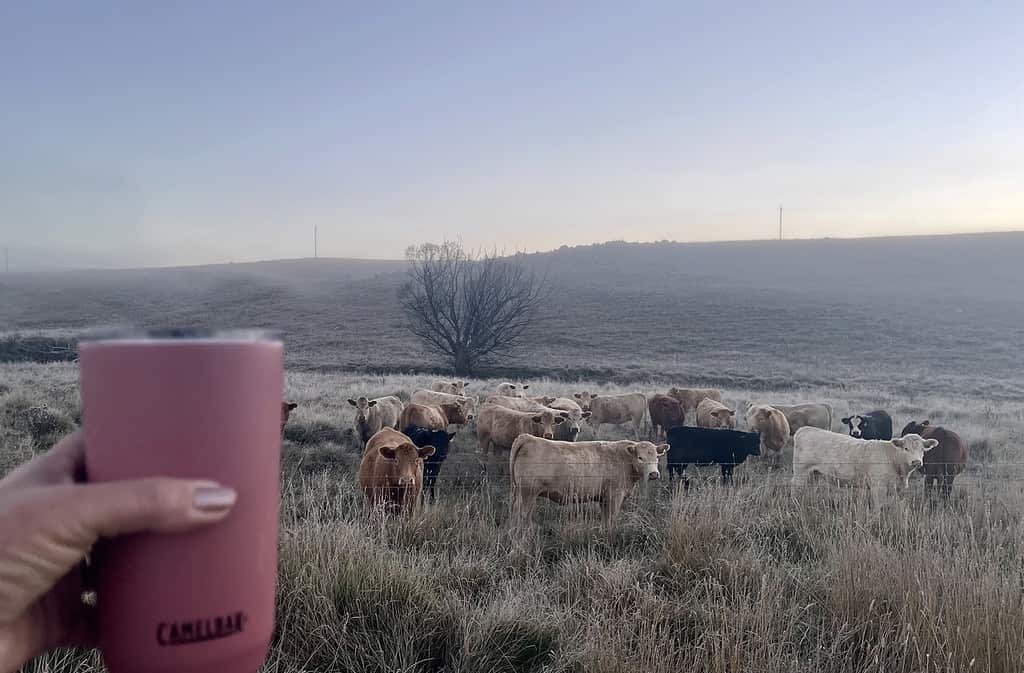
Essential Camera Gear
Your camera gear is essentially your toolbox for this adventure. Here’s a list of must-haves:
Versatile Lens: A 24-70mm lens offers a good range for various shooting conditions.
Extra Batteries: You’ll be shooting a lot, especially if you’re into long exposures or time-lapses. Also, if you’re going in colder conditions, your batteries can drain faster so don’t skimp on packing (and charging) ALL your batteries.
Sturdy Tripod: Essential for capturing sharp, stable images, especially in low-light conditions.
Filters: Given the diverse landscapes – from snow gums across the Snowy Mountains to historic huts – you’ll want a variety of filters like ND and polarising filters.
Memory Cards: Always carry extras; you’ll be surprised how quickly they fill up.
Cleaning Kit: Dust and moisture are inevitable; be prepared to keep your lens clean.
Trusty Tip: Road Trip Safety Essentials
- Ensure your vehicle is in top condition and familiarise yourself with basic car maintenance tasks like changing a tyre
- Always have a backup payment method and keep your devices charged.
- Exercise caution when sharing your travel plans and make it a point to check in with someone regularly.
- Trust your instincts—if something doesn’t feel right, don’t hesitate to change your plans.
6-Night Itinerary: Snowy Mountains Road Trip
Embarking on a photography road trip in the Snowy Mountains is an experience like no other.
To help you make the most of it, I’ve crafted a 6-night itinerary that covers Cooma, Jindabyne, and Tumut. It starts and ends in Sydney making it a fabulous round trip.

Starting and Ending Points
Your journey begins and ends in Sydney. The city’s well-connected transport links make it an ideal starting point, whether you’re flying in or a local looking for a weekend getaway.
Cooma: The First Stop
Your first night will be spent in Cooma, a town rich in history and a gateway to the Snowy Mountains. It’s not just a pit stop; Cooma offers its own set of photographic opportunities, from its historic buildings to the surrounding landscapes.
Jindabyne: The Gateway
The second night takes you to Jindabyne, a town that serves as a gateway to the Snowy Mountains. Nestled beside Lake Jindabyne, the town offers stunning lake views and is a great spot for sunset and sunrise photography.
Tumut: The Extended Stay
The next four nights are spent in Tumut, a town that serves as a base for exploring the broader Snowy Mountains area. From capturing the wild brumbies to photographing historic huts, Tumut offers a range of experiences that cater to every photographer’s taste.
This itinerary aims to give you a balanced experience, combining well-known spots with hidden gems, ensuring you come away with a diverse portfolio of shots.
Cooma: More Than a Brief Stop
Cooma often gets relegated to a mere pit stop on the way to the Snowy Mountains, but it’s worth more than just a quick coffee break. This town is steeped in history and offers its own set of unique photographic opportunities that can add depth to your Snowy Mountains portfolio.
Historic Buildings and Architecture
Cooma is home to a number of historic buildings that make for excellent photography subjects.
From the Cooma Courthouse to the old churches, these structures offer a glimpse into the town’s past. Their architectural details can make for compelling compositions.
There is also no shortage of stunning streets lined with trees if you’re visiting during autumn.
Trusty Tip: Best coffee in town can be found at The Lott Cafe.
Surrounding Landscapes
While Cooma may not have the towering peaks of the Snowy Mountains, it does offer beautiful rolling hills and farmlands.
These landscapes provide a different but equally captivating backdrop for your photos.
The golden hour turns these areas into a photographer’s dream, casting warm hues over the land.
If you get to Jindabyne in time, head to the lake for sunset. Rest up and get ready to head up to Charlotte Pass in the morning for sunrise. You won’t be disappointed!
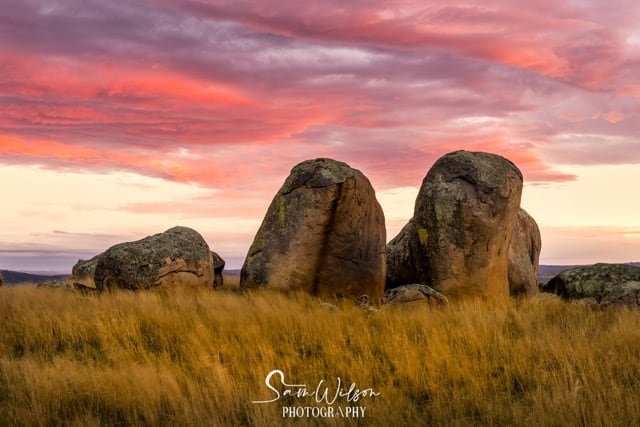
By spending a bit more time in Cooma, you’ll discover that it’s more than just a gateway to the Snowy Mountains. It’s a destination in its own right, offering a variety of photographic opportunities that can enrich your overall experience.
Cooma to Jindabyne
The drive from Cooma to Jindabyne is more than just a transition; it’s a journey through varying landscapes that offer a multitude of photographic opportunities.
From rolling hills to expansive lakes, this stretch is a prelude to the visual feast that awaits you in the Snowy Mountains.
Rocky Plain Road: A Route Worth Taking
While the main road offers its own set of scenic views, taking a detour via Rocky Plain Road is highly recommended.
This less-travelled road offers unique landscapes that are often missed by those sticking to the main route.
From open fields to isolated groves, Rocky Plain Road is a hidden gem for landscape photographers.
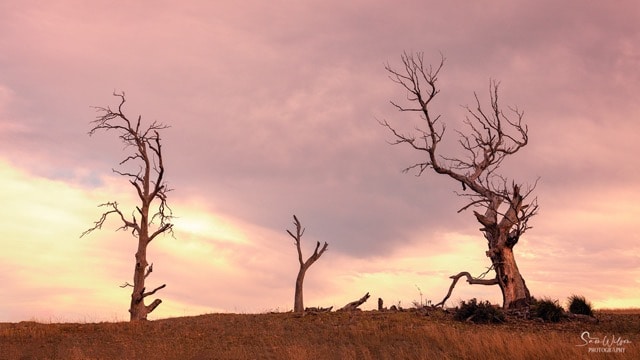
Exploring Jindabyne and Surrounds
Jindabyne serves as more than just a convenient stopover; it’s a pivotal point for landscape photographers venturing into the Snowy Mountains.
With its mesmerising lake views and easy access to Charlotte Pass, Jindabyne is a must-visit for anyone serious about capturing the essence of this region.
Jindabyne’s Hidden History: The Town Beneath the Lake
Jindabyne has a fascinating history that adds another layer of intrigue to your photography journey. Originally, the town was situated on land that is now submerged under Lake Jindabyne. In the 1960s, the township was relocated to its current location due to the construction of the Jindabyne Dam on the Snowy River, as part of the ambitious Snowy Mountains Scheme. This scheme was developed to increase the flow of inland rivers for irrigation and to generate hydroelectricity.
The Old Jindabyne: A Sunken Past
When the lake’s water levels are low, you can still see remnants of Old Jindabyne, particularly the foundations of the old St Columbkille Roman Catholic Church.
This adds a hauntingly beautiful element to your landscape shots, as you capture the interplay of past and present.

Charlotte Pass
A short drive from Jindabyne (around 30 minutes depending on the conditions), Charlotte Pass offers a diverse range of subjects; from panoramic views to the iconic snow gums.
One of the most spectacular views in Kosciuszko National Park can be seen from Snow Gums boardwalk. It is an easy and accessible walk from the Charlotte Pass lookout to the Main Range lookout.
Year round you can see old snow gums that have been twisted and stunted by the blasting effects of wind, snow and ice.
In spring, you’ll see a variety of wildflowers blooming at ground level.
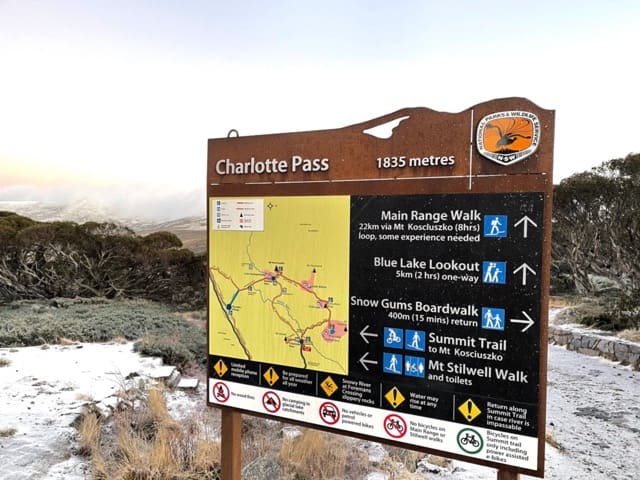
Proximity to Other Photographic Spots
Jindabyne’s strategic location makes it an ideal base for exploring other landscape photography locations in the Snowy Mountains. Whether you’re interested in photographing historic huts or capturing the wild brumbies, Jindabyne puts you within easy reach of these subjects.
The Kosciuszko Huts Association has a great website including an interactive map with all the historic huts you can visit in the area.
By dedicating time to Jindabyne and its surrounding areas, you’ll not only capture some of the Snowy Mountains’ most iconic landscapes but also add a rich variety of scenes to your photography portfolio.
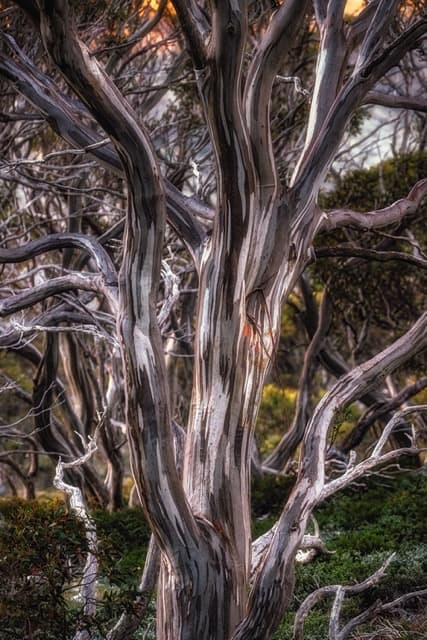
Tips for Photographing Snow
Capturing snow can be a bit tricky due to its reflective nature and the camera’s tendency to underexpose the white landscape. Here are some tips to help you get those pristine white shots:
- Overexpose Slightly: Most cameras will underexpose a snowy scene, making it look grey. Overexpose by +1 or +2 stops to capture the snow’s true whiteness.
- Use a Polarising Filter: This will help to darken the sky and remove any glare from the snow, making your photos look more vibrant.
- Keep a Spare Battery: Cold weather can drain your battery quickly. Keep a spare battery close to your body to keep it warm.
- Mind the White Balance: Auto white balance can make snow look blue. Use the ‘Daylight’ setting to maintain the snow’s natural colour.
- Be Prepared for Quick Weather Changes: The weather in snowy regions can change rapidly. Always have layers and camera covers ready to protect both you and your gear.
- Condensation Tips: Condensation can form on the outside and inside of your camera when you bring it in from the cold. To prevent this, don’t put it straight into a really warm environment, get it out of the bag ASAP and let it warm back up slowly to room temperature.
- Long Exposures: For capturing snowfall, consider using a longer exposure to create a dreamy, soft-focus effect on the falling flakes.
After sunrise at the lake or Charlotte Pass, it’s time for a well earned breakfast and coffee before heading off to Tumut via the most amazing road I’ve ever driven – The Alpine Way!
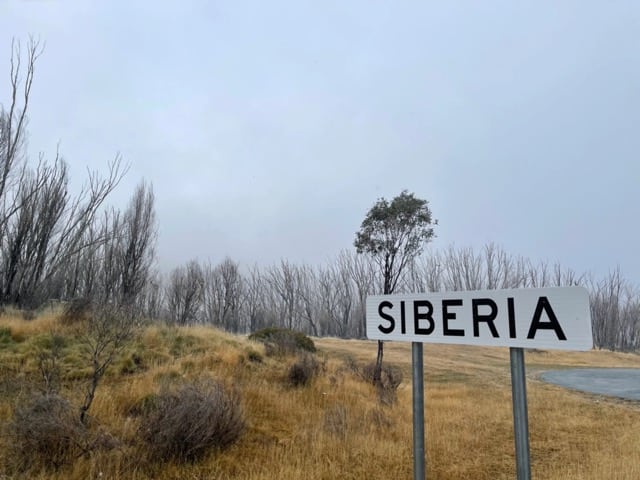
The Alpine Way: A Photographer’s Dream Drive
Introduction to the Alpine Way
The drive from Jindabyne to Tumut via the Alpine Way is an experience that every landscape photographer should have on their bucket list.
This winding road offers a plethora of opportunities to capture the Snowy Mountains’ diverse landscapes.
While winding your way through tall mountain forests, you’ll be treated to stunning views at every turn.

Trusty Tip: Park entry fees apply on Alpine Way and Kosciuszko RoadCheck out all the details here.
Dead Horse Gap: The High-Altitude Stop
Dead Horse Gap provides a unique vantage point for capturing the rugged beauty of the Snowy Mountains.
The area is particularly stunning during autumn when the foliage turns into a sea of reds and oranges.
Khancoban: The Scenic Pause
Khancoban is more than just a pit stop. The serene landscapes here offer a tranquil setting that’s perfect for reflection photography.
The reservoir and surrounding greenery make for compelling compositions.
Batlow: The Orchard Town
Known for its apple orchards, Batlow offers a different kind of landscape photography. The rows of apple trees create leading lines that draw the viewer’s eye, adding a unique touch to your Snowy Mountains portfolio.
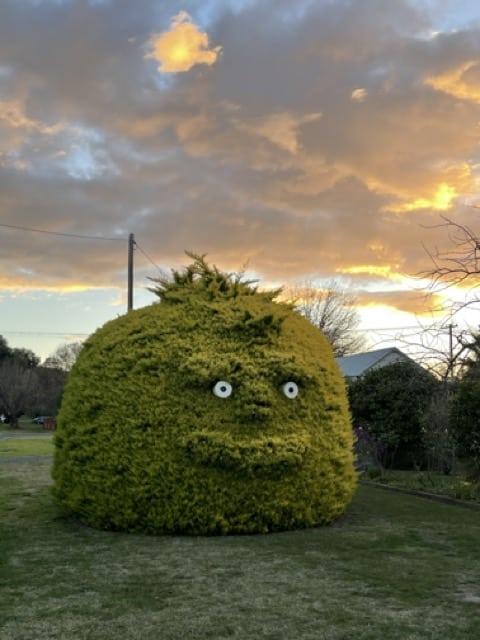
Unveiling Tumut
Tumut serves as an excellent base for an extended exploration of the Snowy Mountains.
With its proximity to unique locations like Coolamine Homestead, Yarrangobilly Caves, and Adelong Falls Gold Mine, look no further than Tumut For a great experience.
My tips from the ground: From Tumut you can head out for numerous day trips and I suggest taking picnic lunches, snacks and plenty of water. There will be a lot of driving involved and not a lot of shops or cafes etc. for supplies. Also make sure you fill the car up with petrol each day.
Brumbies: The Wild Horses of the Snowy Mountains
Spotting and photographing the wild brumbies is a highlight of any trip to the Snowy Mountains. Long Plain Road and Tantangara Road are the go-to locations for brumby sightings.
Tips for Photographing Brumbies
- Use a telephoto lens to capture the brumbies from a distance.
- Employ a higher shutter speed and ISO for sharp, well-exposed photos.
- Be prepared for varying lighting conditions as the brumbies move in and out of shade.
- Keep a steady hand; telephoto lenses are heavy and can lead to camera shake.

Coolamine Homestead: A Step Back in Time
Coolamine Homestead, located on Long Plain Road, dates back to the 1800s. The homestead offers a glimpse into the area’s pastoral history, and its rustic buildings serve as excellent subjects for photography, especially during the golden hour.
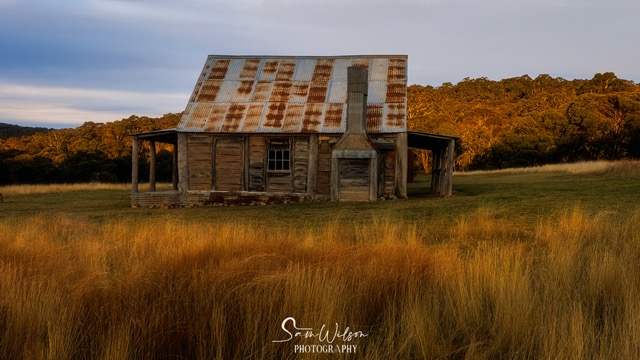
Keep your eyes out for kangaroos – I’ve seen them each time I’ve visited there.
Trusty Tip: Road Conditions and Closures
It’s crucial to note that Long Plain Road and some other high-country roads are closed during the winter months due to snow. Always check the latest road conditions before planning your trip.
Mobile coverage may be limited in the snowy mountains, so download your maps, apps, and music in advance.
When driving in the Snowy Mountains, check for local driving conditions and road closures to make sure you’re prepared.

The Blue Waterholes
A bit further from the Coolamine Homestead, you’ll come across the Blue Waterholes. The area is a haven for landscape photography, with its stunning green gum trees and crystal-clear waters.
Allow a good couple of hours here to fully explore the area.
With toilets and picnic tables, it’s the perfect spot for a lunch break – bring your own though as there’s no cafes.
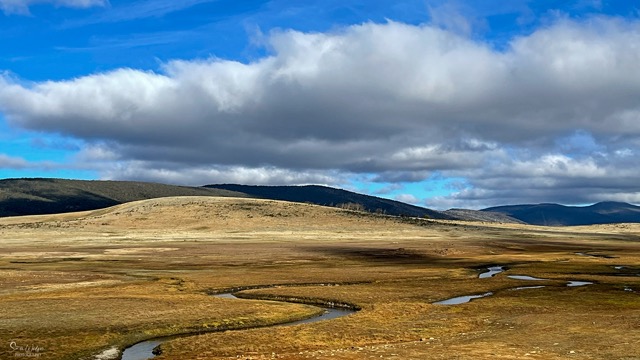
Yarrangobilly Caves: The Underground Marvel
The Yarrangobilly Caves are a geological wonder, roughly 440 million years old. They offer a unique underground photography experience, adorned with stalagmites, stalactites, and other delicate formations.
There is a fee to both park here and take a guided tour, but it’s totally worth it. There is a visitor centre where you can purchase hot coffee from a machine and snacks when you buy your tickets.
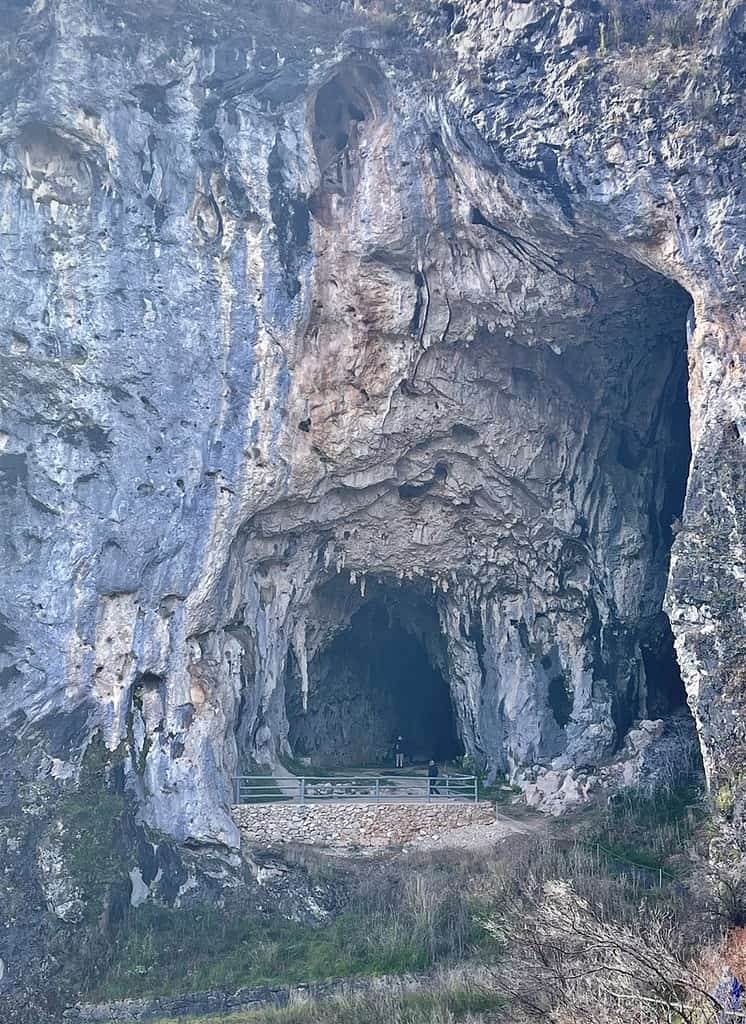
Make sure you also check out the thermal pools while you’re there.
Adelong Falls Gold Mine: The Forgotten History
The Adelong Falls Gold Mine was operational from 1857 until 1914. The ruins you see today offer a variety of textures and structures to photograph, from rusty old machinery to cascading waterfalls.

The Adelong Falls Gold Mill Ruins is a state listed heritage industrial site located about a 20 minute drive from Tumut.
This mill processed ore from minders from Adelong and the Snowy Mountains district until 1914 and has since fallen into disrepair. It remains a very interesting sight to visit with numerous photographic opportunities.
You can either choose to view and photograph from the top near the car park. Alternatively, there is a walk down to Adelong Creek and the ruins that will take you for about an hour.
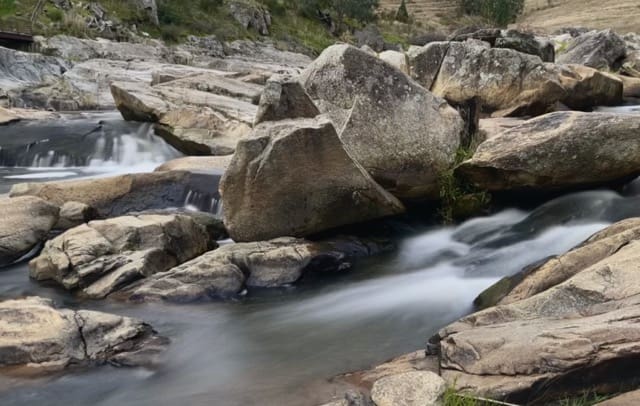
Additional Photographic Opportunities
Don’t miss other noteworthy spots like Blowering Dam, Big Red, Black Perry Lookout, Talbingo, and the Labyrinth for Peace. Each offers unique elements that will enrich your photographic portfolio.
Blowering Dam: A Reservoir of Opportunities
Blowering Dam is not just a water reservoir; it’s a reservoir of photographic opportunities. The dam offers a unique blend of industrial and natural beauty. Capture the dam’s structure against the backdrop of the Snowy Mountains, or focus on the serene waters for some long-exposure magic.
Big Red
Located at the racecourse, Big Red is a sculpture that adds an artistic touch to the natural landscape. Its bold colour and intricate design make it a fascinating subject for photographers looking to add some abstract elements to their portfolio.
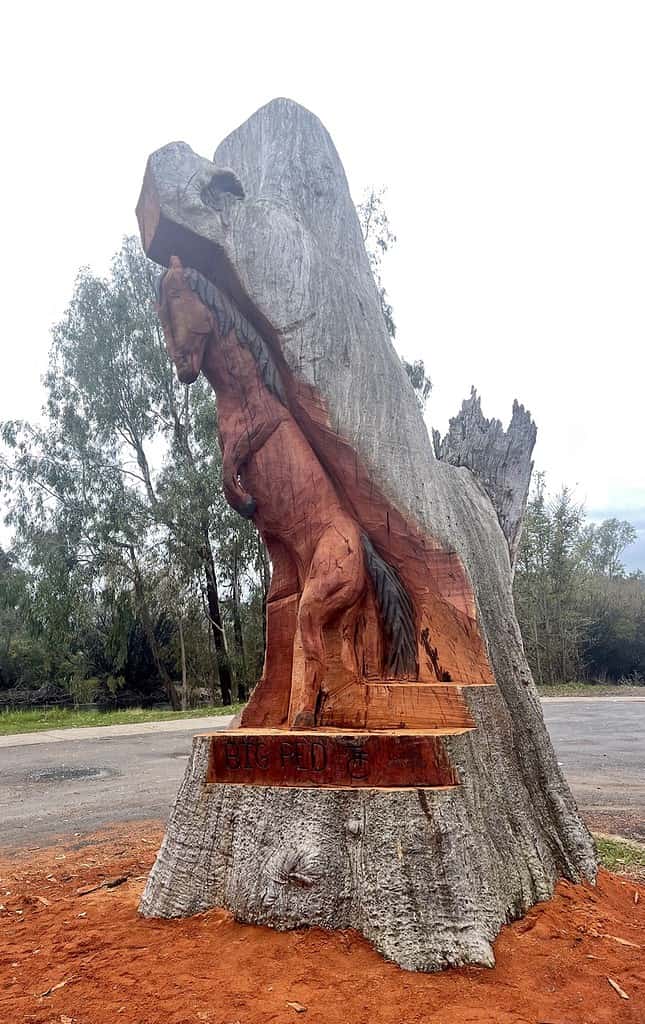
Black Perry Lookout: A Panoramic Paradise
Black Perry Lookout offers panoramic views of the Tumut Valley and the northern end of Kosciuszko National Park. It’s a must-visit for landscape photographers, especially during sunrise and sunset when the sky paints a colourful backdrop to the expansive views.
Talbingo: A Hidden Gem
Talbingo is a charming town that offers a variety of landscapes, from lush valleys to rugged mountains. It’s a less-visited spot, making it perfect for photographers looking for unique and untouched scenes.
Labyrinth for Peace: A Journey Within
The Labyrinth for Peace is more than just a maze; it’s a journey for the soul. The intricate paths offer a unique opportunity for some creative photography. Capture the labyrinth from various angles to reveal its complexity and beauty.

Wrapping Up the Trip
As all good things must come to an end, so does this incredible Snowy Mountains photography road trip.
The drive back to Sydney from Tumut takes around 5 hours, but as you’ve probably learned by now, it’s not just about the destination – it’s about the journey.
FAQs
What is the best time of year to visit the Snowy Mountains for photography?
While the Snowy Mountains offer year-round photographic opportunities, each season brings its own unique landscapes and challenges. This guide is designed to be relevant all year round.
Do I need a 4WD to explore the Snowy Mountains?
While many areas are accessible with a standard vehicle, some roads, like Long Plain Road, are closed during winter and may require a 4WD during other seasons.
What wildlife can I expect to photograph?
Apart from the iconic brumbies, you can also expect to see kangaroos, wombats, and a huge variety of bird species.
How do I protect my camera gear from the elements?
Weather conditions can change rapidly in the mountains. It’s advisable to carry weatherproof covers for your camera and lens, as well as silica gel packs to combat moisture.
Is it safe to travel solo in the snowy mountains?
While many photographers do travel solo, just like anywhere, do your research, always let someone know your itinerary and check-in regularly, especially if you’re venturing into more remote areas.

Conclusion
Embarking on a photography road trip through the Snowy Mountains is more than just a journey; it’s an experience that enriches your portfolio and feeds your soul.
From the historic charm of Coolamine Homestead to the wild allure of the brumbies, every moment spent in this region offers a unique photographic opportunity.
If you’ve ever felt the urge to capture the diverse landscapes of Australia, the Snowy Mountains should be at the top of your list.
So, pack your camera gear, plan your itinerary, and set off on an adventure that promises not just stunning photos, but memories that will last a lifetime.
Ready to share your own Snowy Mountains experiences or have questions about the trip? Leave a comment below.
Your insights and queries not only enrich this community but also help fellow photographers plan their own unforgettable journeys.
That’s it for now – Keep clicking and stay caffeinated
Like this post? PIN it so you can save it for later
Other Helpful Articles:
- Travel Photography Shot List: Essential Photos for Your Adventures
- Planning A Road Trip
- Travel Landscape Photography: Tips to get Great Photos When Travelling
- Photography Location Guides
- Landscape Photography 101 – loads of helpful articles all things landscape photography

Don’t miss a post – sign up Here if you haven’t already
Note – Unless otherwise stated, all photos are mine and remain my copyright images – Sam Wilson Photography.






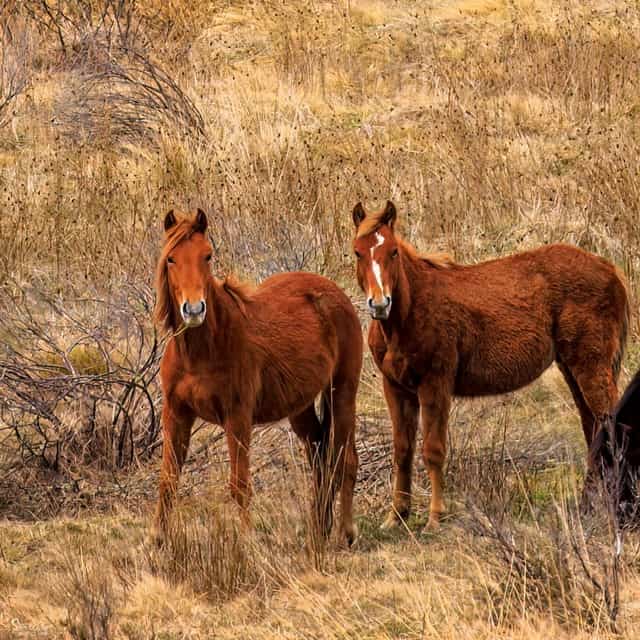
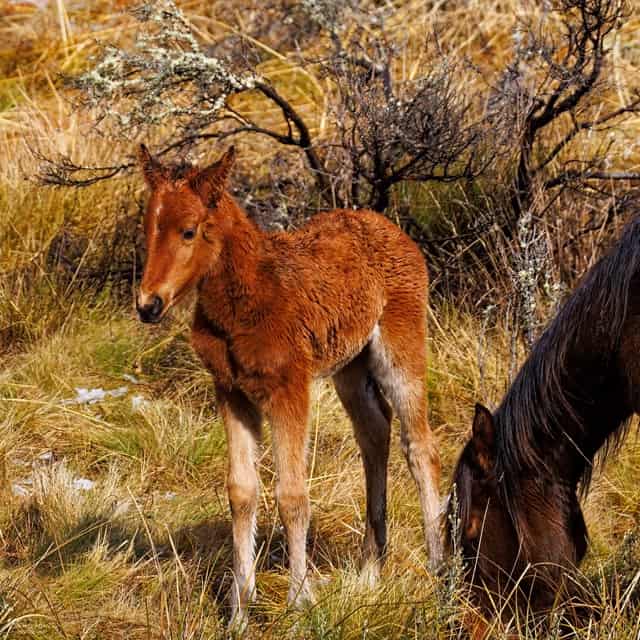
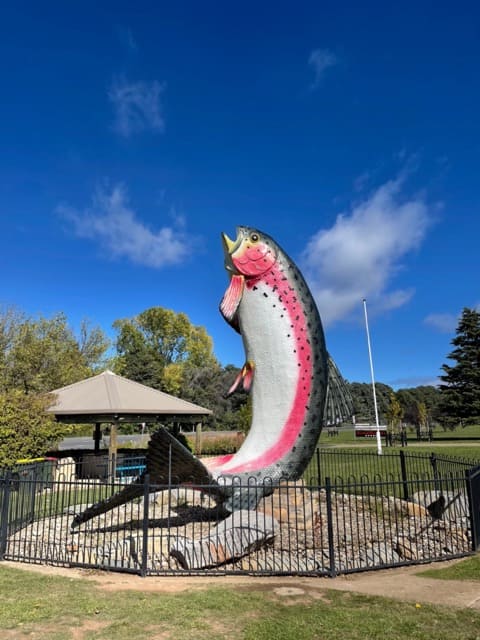
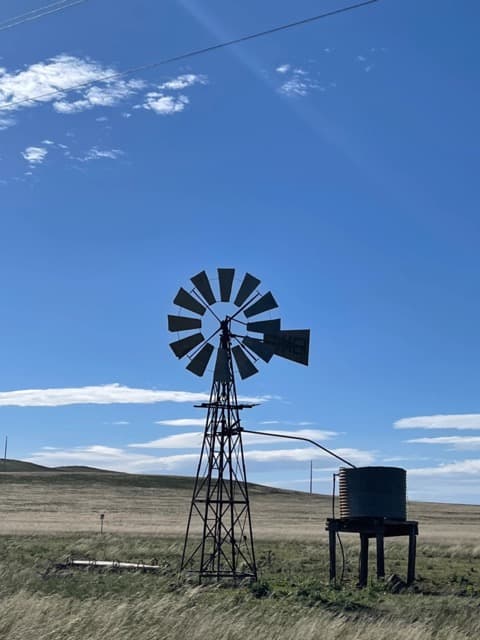
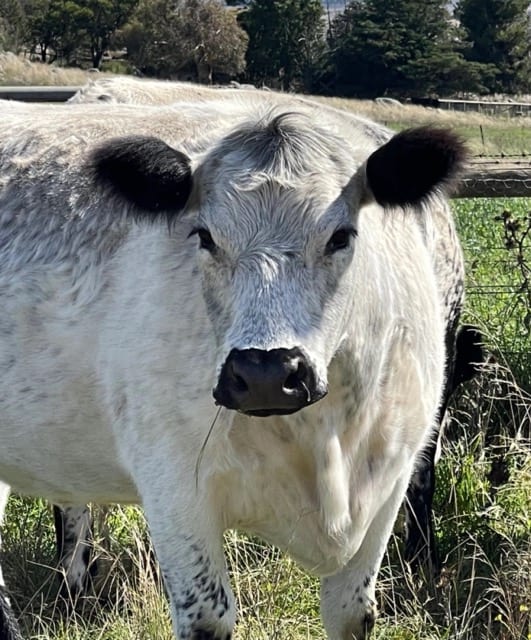

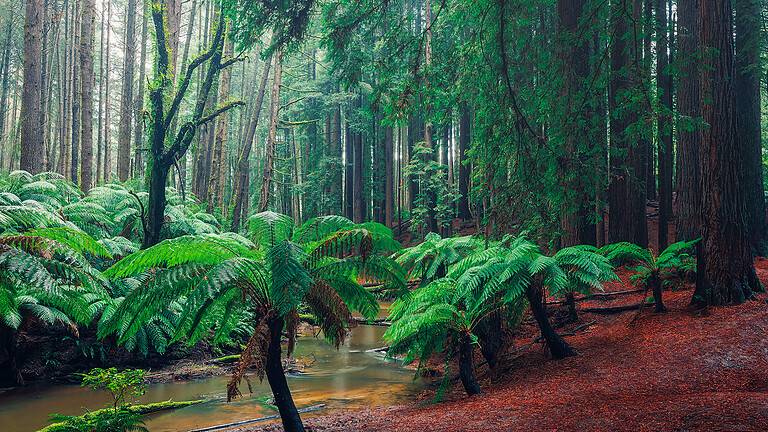
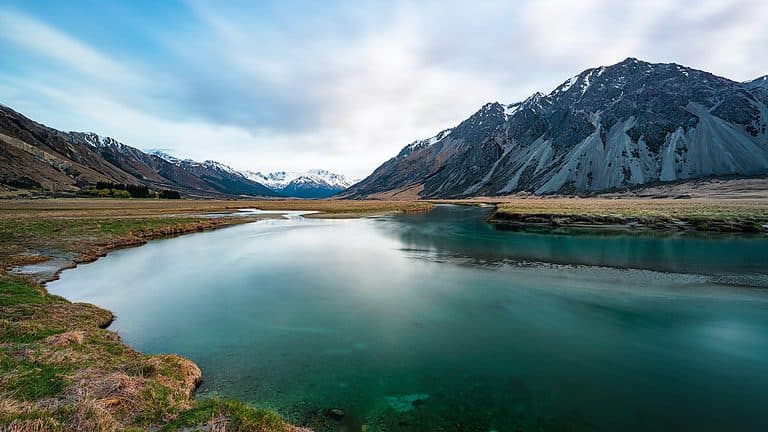
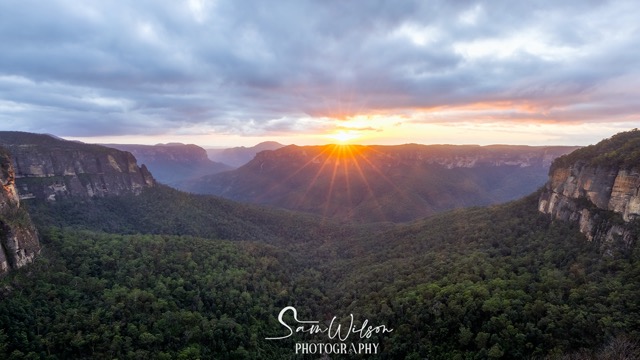


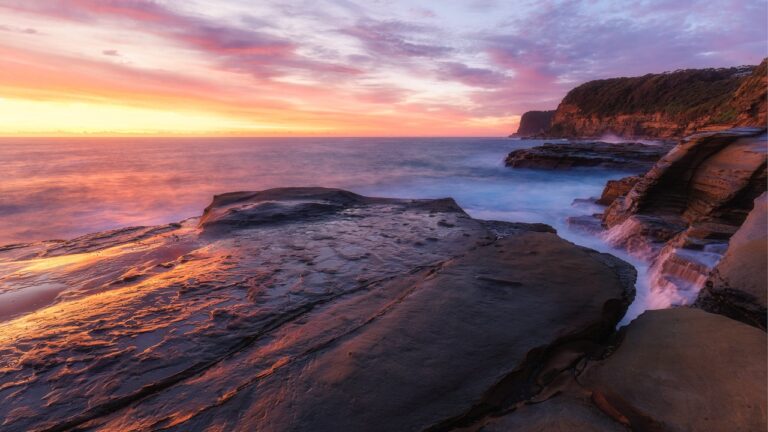
5 Comments